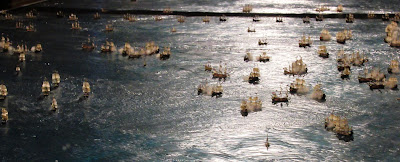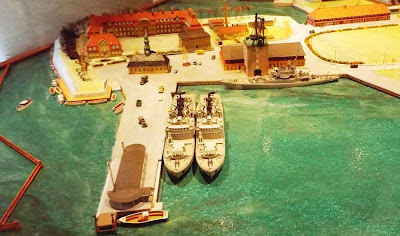Before I start, please can I point out that the title of this blog entry does not contain the wrong spelling of 'right'; as you will find out, that is a 'hook' to catch the reader's eye in the hope that they will see it and want to read more.
I was recently asked what I did now that I was retired, and on the spur of the moment – and without much thought – I replied 'I am a writer'. I then felt obliged to justify that … and discovered to my own surprise that I probably spend more time writing than I do doing almost anything else. I will be looking at just how much I have written in the last year or so when I write a blog review of the last year and my plans for the future, but as I am presently working on a book that I was commissioned to write rather than one that I am writing off my own bat, I thought that I ought to record just how I go about the process.
From what I can gather, all writers have a method or process of writing that is peculiar or particular to them. When George Simenon sat down to write a Maigret story, he had no idea of how the plot would develop; he just let it evolve whilst he wrote. Other writers have a daily routine where they sit somewhere isolated – usually a shed or summerhouse – and write some many thousand words before lunch and then so many more during the afternoon. Some like to have music playing in the background; others like total silence. Some like to be surrounded with displays on which are pinned various pieces of information they will need during the writing process; others like a completely bare desk, devoid of all notes and distractions.
In my case I seem to write best in solitude and silence, surrounded by the reference books and notes that I will need. (As a result, the room that I write in looks like a tip … but I usually know where I can find what I need when I need it!) The research I use would have been put together over weeks, months, or even years because I like to do my research and preparation in detail before I start … and when I am ready, I write … and write … and write. I become totally absorbed in the process and blitz the whole thing.
My most recent book – LA ULTIMA CRUZADA – is both the longest I have written and took me the longest to write. It had been in preparation for years. In fact I had been writing notes and collecting references almost from the day the second edition was published back in the early nineteen nineties. By the time I actually sat down to write it, I had already formed in my head what the book was going to look like when it was complete … and other than the fact that it does not contain the photographs that I wanted to include, but which I could not afford to buy licences for, it looks pretty well how I imagined it would.
Alexander Suvorov is quoted as having said ‘train hard, fight easy’ (or possibly ‘hard training, easy combat’) and in some ways that is the way I go about writing, although my version of the quote would be ‘extensive preparation, easy writing’. Doing the research until I feel totally immersed in it enables me to begin the writing process in my mind before I sit down at my keyboard. When I finally put finger to keyboard, the words seem to flow out faster than I can actually type them, and I often finish the day with many pages written and two aching index fingers! (I have never learned how to touch-type, which is not bad thing as it gives me time to revise what I write as I write it.)
The book I am currently working on – and which I should be writing now if it wasn’t for the need I have to take a break every so often in order to keep my mind ‘fresh’ – is the centenary history of a very large and very important Masonic Lodge. I was asked to write it last year, and the deadline for publication is May 2020. The research has involved me reading many pages of hand-written documents and creating a database of the Lodge’s membership as well as a meeting-by-meeting timeline. At the same time my wife (Sue) has been doing genealogical research into each of the Lodge’s Worshipful Masters, and this now sits in ten ring binders that are stored in boxes in the small room where I write. Just before Christmas we reached the point where our researches could not proceed any further until the last batch of documents is released to us. I therefore decided to begin the process of writing the book with what research we have done to date, in the full knowledge that I will have to revisit it at a later date.
I began writing the book two days ago … and I have already completed nearly forty pages of text. I hope to double or even treble this by the end of the forthcoming weekend, but by setting myself this target it looks as if I won’t be doing much in the wargaming line before the end of 2017. Mind you, that is only three days, so it is doubtful that I will begin to suffer any withdrawal symptoms!



























































































